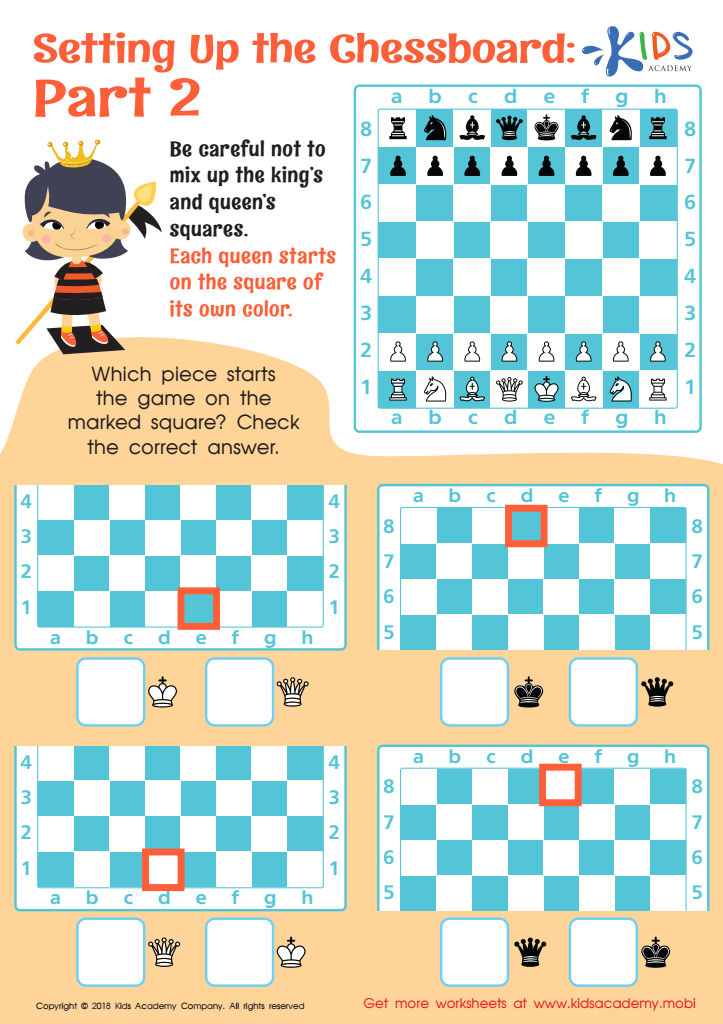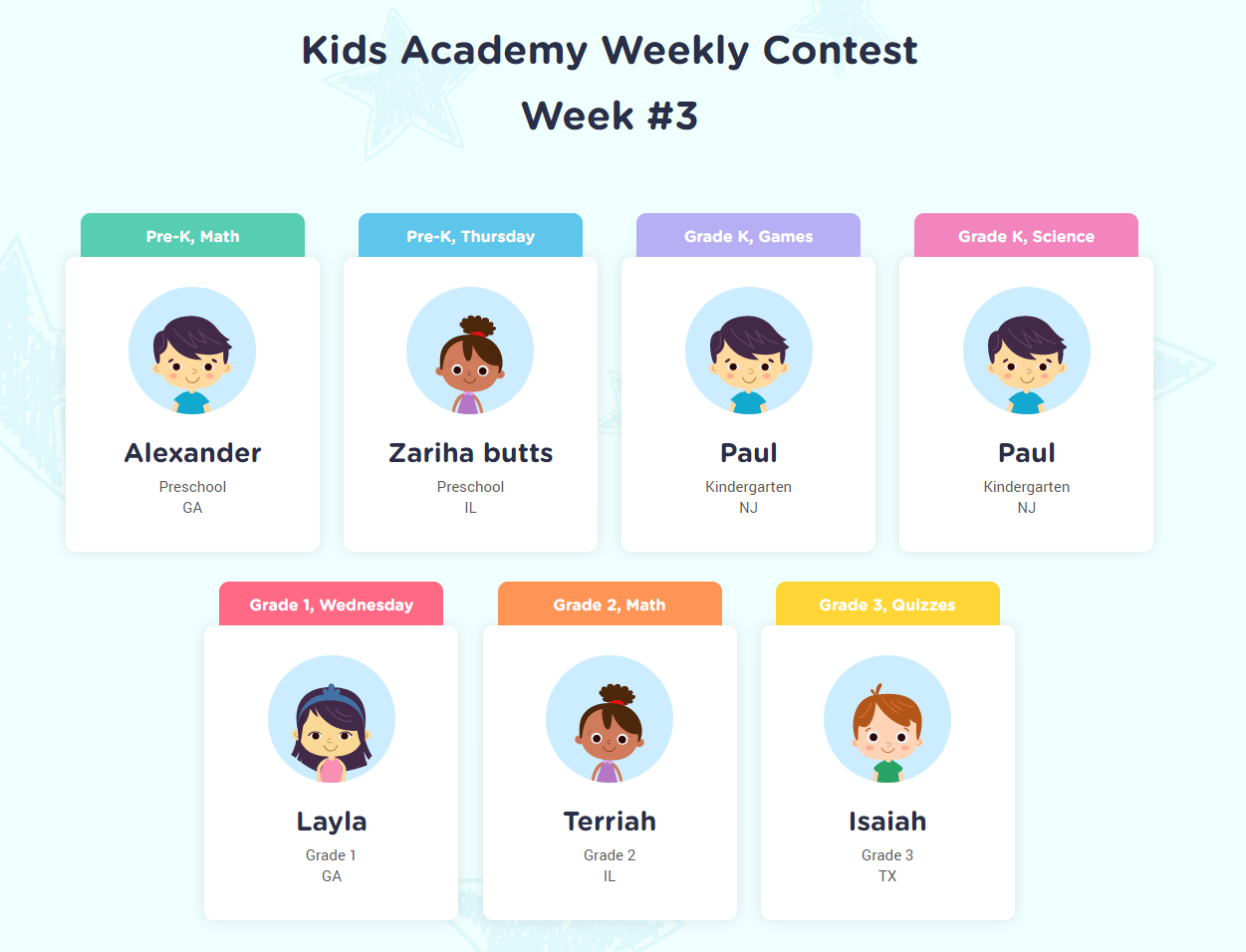Piece placement comprehension Worksheets for Kids
1 filtered results
-
From - To


Setting up the Chessboard: Part 2 Worksheet
Question/Answer
How does the mastery of the Piece placement comprehension skill affect a student's performance at an early age?
Mastering the Piece Placement Comprehension skill at an early age significantly boosts a student's spatial awareness, problem-solving abilities, and fine motor skills. This foundational skill underpins the understanding of more complex concepts in mathematics, science, and engineering, leading to improved academic performance and enhanced cognitive development over time.
What does the Piece placement comprehension skill mean when it comes to Grade 1 Chess learning?
The Piece placement comprehension skill in Grade 1 Chess learning refers to the ability of a student to recognize and understand how each chess piece moves and captures on the board. This fundamental skill involves grasping the unique movements of pawns, knights, bishops, rooks, queens, and the king, setting the groundwork for strategy development and gameplay improvement.
What are some effective activities to train students’ Piece placement comprehension skill when teaching them about Chess?
Effective activities for training students in chess piece placement comprehension include setting up specific board positions for analysis, playing mini-games that focus on utilizing one or two types of pieces (e. g. , pawns or knights), conducting piece movement drills, and using puzzles that require finding the best spot for a piece.

 Assign to the classroom
Assign to the classroom











